Crabgrass is one of the nasty and dreaded lawn weeds that can prove to be a real headache for the gardeners. But how will you know whether it's crabgrass or some other weed? We tell you what does crabgrass actually look like.
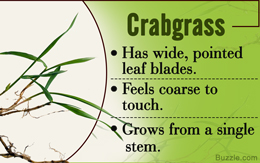
Attention Beer Lovers!Crabgrass, which is considered to be a troublesome weed, can also be fermented and brewed into a tasty beer!Weeds can be really invasive and a troublesome interference in your garden. They take away the beauty of your lawn and can leave them looking unsightly, causing harm to the natural growth of other plants by feeding on nutrients present in the soil. One such dreaded invader is crabgrass.
Crabgrass is called so because it spreads across the ground from the central root only to look like a crab. It is one of the most common recurring weeds that usually thrives in full sunlight and warmer months, and grows in large clumps. It is an annual plant that eventually dies off in fall after surviving for about a year. It can cause a problem for the owners because it grows vigorously in hot and dry climatic conditions. It can quickly take a toll over your lawn and destroy other regular grass. Knowing how to identify crabgrass is really important unless you want all your money and efforts to go down the drain.
Read further to know how crabgrass looks.Crabgrass IdentificationCrabgrass
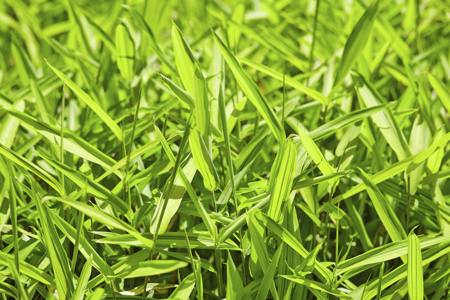
Crabgrass Leaves
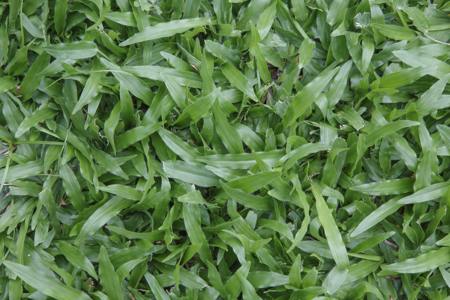
When it comes to identifying crabgrass, it cannot be missed. It is easily noticeable in the lawns. It is a rapid-growing grass that is usually found growing among other regular grass. They grow in large clumps with the blades pointing outwards that make them look like crabs.The seedling looks like a small corn plant when it first pops out, and very quickly develops shoots on the side that separate out as branches.
It has a coarse feel to it and is yellowish-green or lime-green in color. They have spreading stems that are branched at the base. The stems or branches then fall to the ground and start growing in a star shape or crab shape.It germinates in the months of June and July when the temperature of the soil reaches about 55°F. The main target areas of this plant to attack is the one damaged by insects or the areas along sidewalks or pathways.
The leaves are flat, wide, and pointed, and grow from a single stem. The leaf buds are rolled, having a spiral-shaped cross section. They flatten out as and when they mature. They are about ¼ to ⅖ inch wide and 2 to 6 inches in length.The smooth crabgrass is a bit pale in color and has swollen nodes in a zigzag shape. They are usually a problem in summer for the turf grasses.
They usually flower in August and September. Its flowers are one of the prominent parts that consist of 3-13 purple, finger-like spikes that are up to six inches in length.Different Stages of Crabgrass
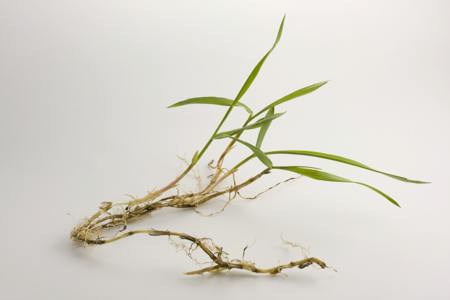 Young Crabgrass
Young CrabgrassSeedlings that pop up may be of the size of a coin.
The seedling then quickly starts developing a branch or shoots on the side.
The grass starts branching in a pattern typical to crabgrass, and starts spreading as and when it has the room to.
It thrives in ample sunlight and warm temperature. The leaves start unfolding from the leaf bud and grow to be wide and dense.
They grow in large clusters, overpowering the other desirable grasses.Types of CrabgrassThere are two types of crabgrasses:Smooth CrabgrassAlso called by the name,
Digitaria ischaemum or small crabgrass, smooth crabgrass grows up to 15 inches tall and also grows best in summers. The leaves are dull green in color having a hairy base. The leaves grow up to 4 inches in length. It has a shallow root system. It is the grass that you may most likely spot growing in your lawn. A way to prevent it from growing would be to apply pre-emergent herbicides twice during January and May, respectively.Large CrabgrassLarge crabgrass is also called
hairy crabgrass or Digitaria sanguinalis. It can be distinguished by hair on the longer leaves and wider leaves, which are a pale bluish-green in color. It grows up to 3-feet tall if left unchecked. The large crabgrass doesn't overpower other grasses in your lawn. One way to prevent it from growing is by mulching the garden area so that it doesn't germinate.Crabgrass Vs. Bermuda Grass
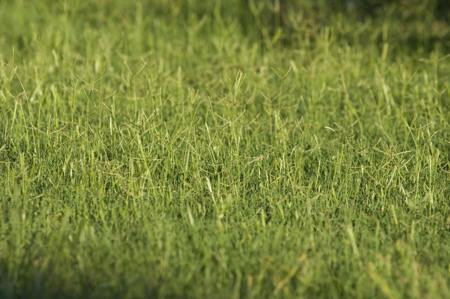 Bermuda GrassBermuda grass
Bermuda GrassBermuda grass comes from African Savannah, and was brought into the US as a hardy and drought-tolerant crop in 1807.
Crabgrass originated in Europe and Eurasia, and was brought to the US as a forage crop in 1849.
Both are hardy grasses that invade all kinds of garden under favorable conditions. However, Bermuda grass is sometimes used as a hardy grass for lawns, but crabgrass is mostly dreaded by everyone.
Bermuda grass can tolerate drought and stays green the whole year. Its leaf blades are light greenish-gray with purple-colored stems, and produce a grass bedding for the garden.
Crabgrass is yellowish-green and spreads out in star pattern. It doesn't present a grass bedding of any sort.
Bermuda grass survives underground even in dry conditions and re-sprouts when there is enough moisture. It grows well in moisture and warm conditions, and re-sprouts from roots unlike crabgrass.
Crabgrass needs a temperature above 55℉ to survive and germinate. It dies out in fall and re-sprouts from the seeds in spring.
Crabgrass can be seen almost everywhere in gardens, golf course, orchards, vineyards, roadside, nurseries, etc. A healthy, mowed, well-fertilized, and well-watered garden is the key to keeping it weed-free.
Happy gardening!






 Attention Beer Lovers!Crabgrass, which is considered to be a troublesome weed, can also be fermented and brewed into a tasty beer!Weeds can be really invasive and a troublesome interference in your garden. They take away the beauty of your lawn and can leave them looking unsightly, causing harm to the natural growth of other plants by feeding on nutrients present in the soil. One such dreaded invader is crabgrass.
Attention Beer Lovers!Crabgrass, which is considered to be a troublesome weed, can also be fermented and brewed into a tasty beer!Weeds can be really invasive and a troublesome interference in your garden. They take away the beauty of your lawn and can leave them looking unsightly, causing harm to the natural growth of other plants by feeding on nutrients present in the soil. One such dreaded invader is crabgrass. Crabgrass Leaves
Crabgrass Leaves When it comes to identifying crabgrass, it cannot be missed. It is easily noticeable in the lawns. It is a rapid-growing grass that is usually found growing among other regular grass. They grow in large clumps with the blades pointing outwards that make them look like crabs.The seedling looks like a small corn plant when it first pops out, and very quickly develops shoots on the side that separate out as branches.
When it comes to identifying crabgrass, it cannot be missed. It is easily noticeable in the lawns. It is a rapid-growing grass that is usually found growing among other regular grass. They grow in large clumps with the blades pointing outwards that make them look like crabs.The seedling looks like a small corn plant when it first pops out, and very quickly develops shoots on the side that separate out as branches. Young CrabgrassSeedlings that pop up may be of the size of a coin.
Young CrabgrassSeedlings that pop up may be of the size of a coin. Bermuda GrassBermuda grass comes from African Savannah, and was brought into the US as a hardy and drought-tolerant crop in 1807.
Bermuda GrassBermuda grass comes from African Savannah, and was brought into the US as a hardy and drought-tolerant crop in 1807.